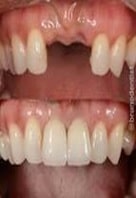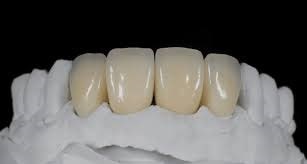A bridge is made up of two crowns for the teeth on either side of the gap—these two anchoring teeth are called abutment teeth. The false teeth are called pontics and can be made from gold, alloys, porcelain or a combination of these materials. Dental bridges are supported by natural teeth or implants.
WHY IS IT NECESSARY TO REPLACE MISSING TEETH?
Missing teeth will affect your appearance, directly or indirectly and make you conscious of your looks
It may reduce your chewing efficiency and thus may affect on your digestive system in the long run
The alignment of your teeth may change. teeth work together and when a tooth is lost, the nearby teeth may tilt into the empty space. Or the teeth in the opposite jaw may shift up or down to fill that space. This can affect your bite and place unusual stress on your teeth.
Chewing only on one side only may cause extra stress on the jaw joints. A missing tooth may also cause shrinking of your jaw bone. This can change how the lips and cheek are supported.
Teeth that have drifted or tilted are also difficult to clean, this makes them more susceptible to tooth decay and gum disease. In the long run teeth maybe lost.
Drifted teeth are difficult to clean, thus resulting into further complications.
WHAT IS A BRIDGE AND HOW IS IT ATTACHED
It is an artificial tooth/ teeth suspended between natural teeth, taking support from them. The artificial tooth rests on the jaw area with the missing tooth, being replaced. A fixed bridge is commonly cemented to the natural teeth next to the space left to the missing tooth/ teeth.





